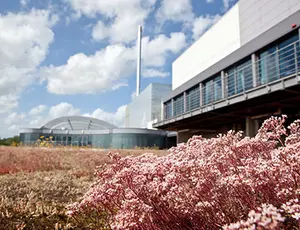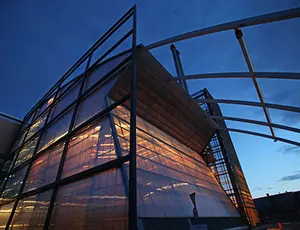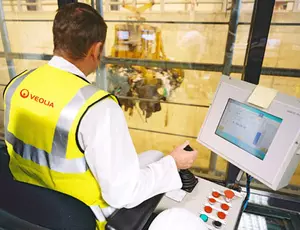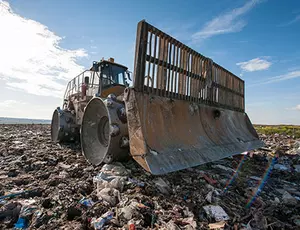The household waste that used to go to landfill in Hampshire is now sent for Energy Recovery. There are three Energy Recovery Facilities (ERFs) in Hampshire, and you can learn more about them by following their individual links. On this website you can also see all the emissions data from our ERFs, which is updated weekly.
The process of Energy Recovery from waste is the same for each of our facilities.
- Household waste is sent to an Energy Recovery facility where it is tipped into a bunker
- A crane grabs the waste and places it into the feed hopper. It then drops down a feed chute onto the grate
- The action of the moving grate turns the waste to allow it to burn fully.
- The burnt out ash passes through the ash discharger onto an ash handling system, which extracts metal for recycling
- The remaining ash is sent for recycling or disposal
- Hot gases pass over the boiler tubes where they are cooled, while water becomes high pressure steam
- A turbo-generator uses the steam to produce electricity for export to the National Grid
- The gases from the boiler go through an extensive flue gas cleaning process. This consists of a gas scrubber and a bag filter where particulates are filtered out. The resulting material known as Air Pollution Control Residue is sent for disposal at a licensed site
- The cleaned gases are finally released to the atmosphere through the chimney
You can find emissions data for each of the facilities in Hampshire by going to the individual pages for Chineham, Marchwood and Portsmouth.
Energy Recovery in Hampshire
In Hampshire, Veolia already operates three modern Energy Recovery Facilities: these videos explain the Energy from Waste process and tell the story of how the company has managed Hampshire's waste since 1996 through recycling, composting and Energy Recovery and shows how its Chineham Energy Recovery Facility was developed.









